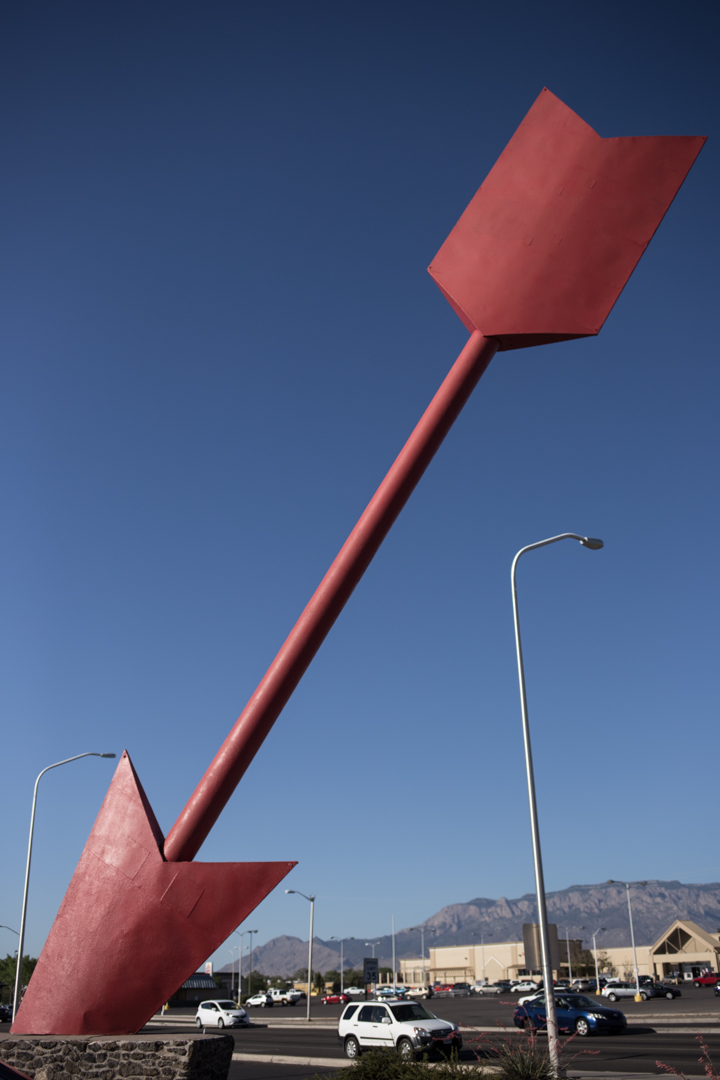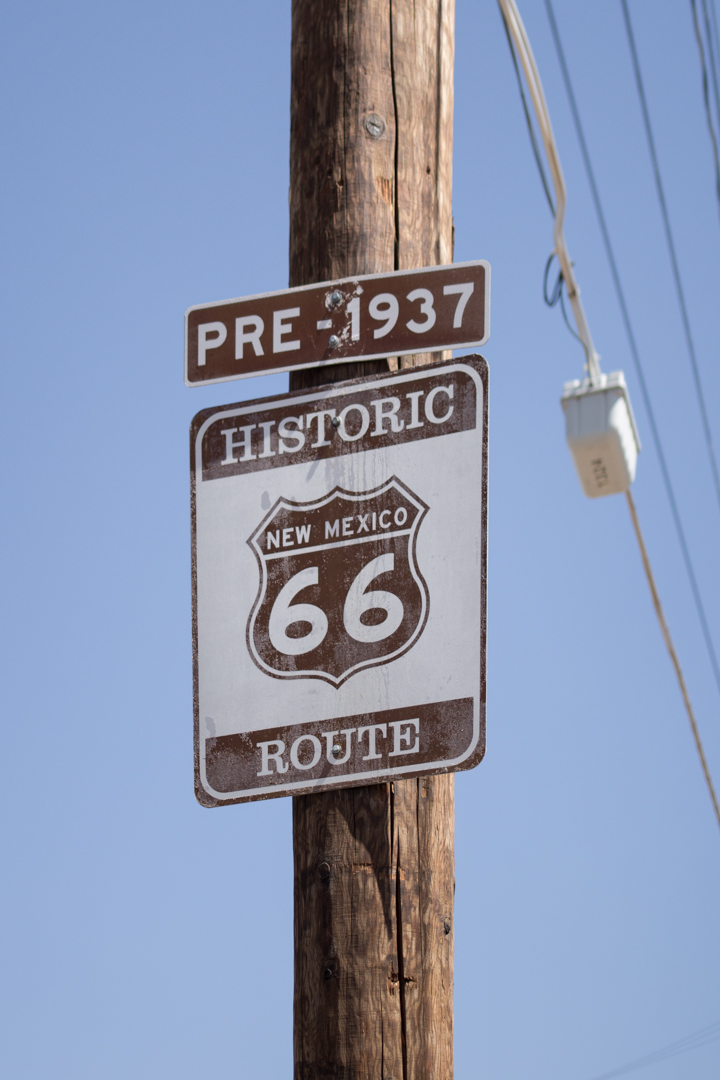Route 66: Albuquerque to Santa Rosa
This may actually be the last post about my AZ/NM Route 66 road trip—a trip I took back in the beginning of June. I’ve tried to space out the posts to prevent neon sign overload (is there even such a thing?), but we squeezed so much into just a few days that it’s truly taken me six months to process the entire trip. I’m about to leave tomorrow on another five-day trip—which will include a few stops at the very beginning of Route 66—so I’m currently operating at the height of my pre-road trip excitement.
Before I decided to add Tucumcari to my itinerary at the last minute, Albuquerque was as far east as we were going to go in New Mexico. My friend Tag is from New Mexico and he was very generous with his tips on what to see while we were in town. Albuquerque is the most populous city in New Mexico and it’s divided into quadrants by Central Avenue. Central Avenue was part of old Route 66 from 1937 until the highway was officially decommissioned in 1985, but the area began to decline economically when Interstate 40 was built in the ‘60s.
We only spent a day and a half in ABQ, but we drove the length of Central Avenue, visited a few Breaking Bad filming locations, explored a cemetery, ate at the Dog House and met a few local giants.
We stayed for one night at the Monterey Non-Smokers Motel located in the Old Town neighborhood. The location was excellent—right on Central Avenue and adjacent to several other historic motels and restaurants—the room was clean and the staff was friendly. I can’t think of one time that I’ve been let down by choosing a motel or restaurant based solely on its signage and the Monterey Motel neon sign looks just as good in the daylight as it does lit up at night.
A lot of the motels on Central Avenue have fallen into disrepair or have a bad reputation, but it’s not all doom and gloom in ABQ. The El Vado Motel, located right next to the Monterey, has recently undergone an $18 million renovation. Opened in 1937, the El Vado sat vacant for several years after it closed in 2005. The previous owner had wanted to tear down the motel and build luxury townhouses, but the city fought to seize the property (something we could use more of here in New York).
In the morning, we had breakfast at the El Camino Dining Room, located on a section of the pre-1937 alignment of the Mother Road, and right across from arguably the best sign in ABQ, the El Camino Motor Hotel. The El Camino was built in 1950 and is now owned by a local mother and daughter—the green chile huevos rancheros was excellent, and the classic diner decor is perfect.
On my way from ABQ to Tucumcari, I couldn’t resist stopping at Clines Corners, a rest stop serving Route 66 travelers since 1934. After the build up—like South of the Border, billboards herald its arrival for miles—it was a bit of a let down, but it’s a good place to use the restroom or shop for New Mexico souvenirs.
Located about halfway between ABQ and Tucumcari is the tiny town of Santa Rosa. Despite its desert-like climate, Santa Rosa has several natural lakes and was once a booming Route 66 town. I passed several diners with excellent signs but unfortunately didn’t have the time to stop for more than a few quick photos. In 1940, Santa Rosa was featured in John Ford’s adaptation of The Grapes of Wrath, but like most other Route 66 towns it feels as if time really stopped in the 1960s.

































